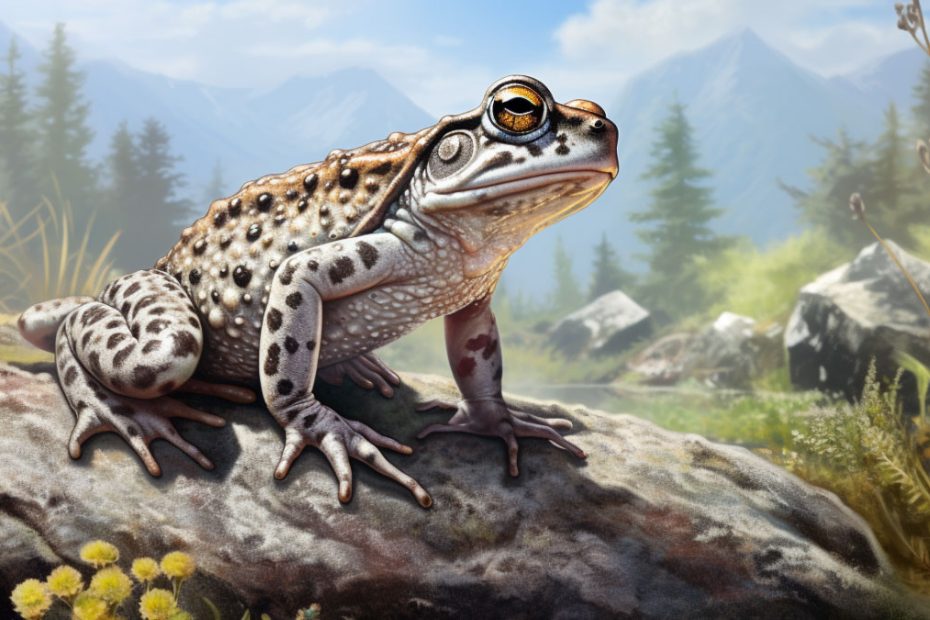The Yosemite toad is a small-to-medium-sized amphibian native to California’s Sierra Nevada forests and meadows. It’s known for its adaptability to living in high altitudes. While this toad used to be abundant in its range, its population has been on the decline in recent years.
The remaining population is now scattered and only consists of a few breeding adults. And has earned the classification of an endangered species.
In this article, we’ll explore the Yosemite toad’s biology, behavior, and habitat. We’ll also cover other information about this toad including why it is endangered, its current populations, predators, and where it’s currently found. We’ll also look at some interesting facts you may not know about the toad.
Biology of The Yosemite Toad:
The Yosemite toad scientific name: The Yosemite toad scientific name is Anaxyrus canorus. The small to medium-sized amphibian is known to inhabit the high-elevation regions of Sierra Nevada, California. They belong to the family Bufonidae and class Amphibia.
Yosemite toad size: An adult toad measures around 1.2 to 2.8 inches (3 to 7.1cm) in length for both sexes. However, females are usually larger than males. In terms of weight,
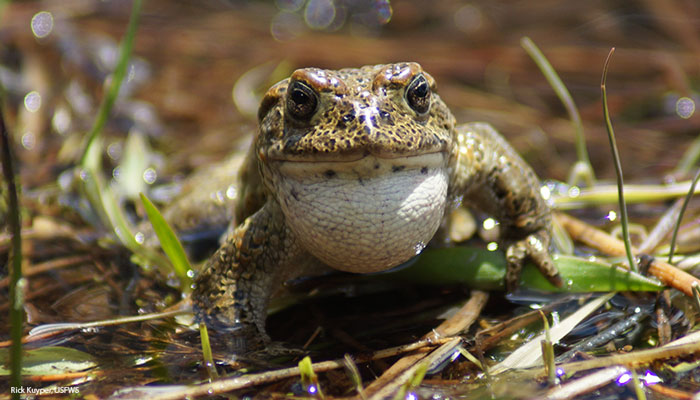
Appearance: Unlike most toad species, the male and females don’t look anything alike. Males usually feature a coloration ranging from dull yellow to olive green or bright lemon plus black speckles. Females, on the other hand, have a striking mosaic coloration of dark blotches pattern on an olive-tan background. These toads are usually stocky, with widespread legs and bumpy skin.
Diet and feeding: Yosemite toads’ primary diet consists of small invertebrates like spiders and insects. They usually use their sticky tongues to capture their prey. Some of the common invertebrates they feed on include beetles, bees, wasps, ants, flies, and millipedes.
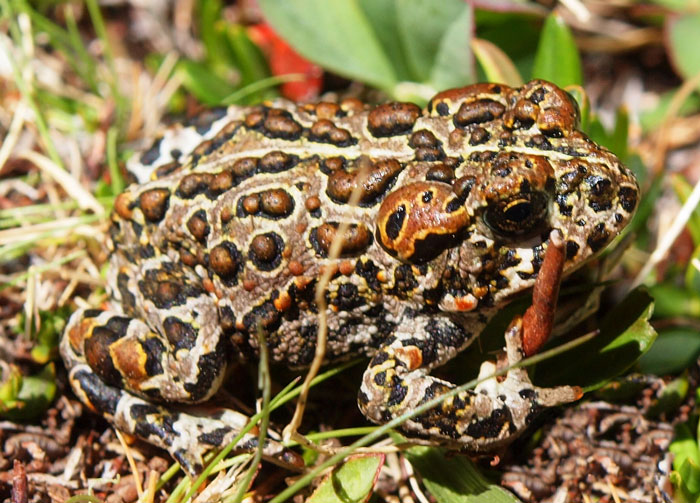
Reproduction strategies: The breeding season for Yosemite toads is from May to July, depending on the amount of snowfall from the previous winter season and the elevation. Both males and females progress toward breeding sites right from their hibernation, almost immediately after the snow melts. The breeding process occurs in shallow pools created by the melting snow, with males arriving first and making calls to attract the females. Fertilization for these species of toads occurs externally, where males release sperm on the eggs as they’re laid on the waters.
Life cycle: The Yosemite amphibians undergo a complex life cycle similar to most other toad species. It starts with eggs, which are laid in breeding ponds. They then hatch into tadpoles which eventually metamorphose to become adults.
Communication and vocalizations: Male toads make vocalizations like trilling sounds to attract females during the breeding season.
Conservation status and threats: The Yosemite toad is listed as a federally endangered species due to its widespread population decline. This is caused by various threats it faces in its natural habitat, including habitat loss, climate change, diseases, and predation. Thankfully, conservation efforts are underway to help protect its unique mountainous habit.
Lifespan: The Yosemite toad species has a longer lifespan; females can live for up to 15 years or more while males have a bit shorter lifespan of around 12 years.
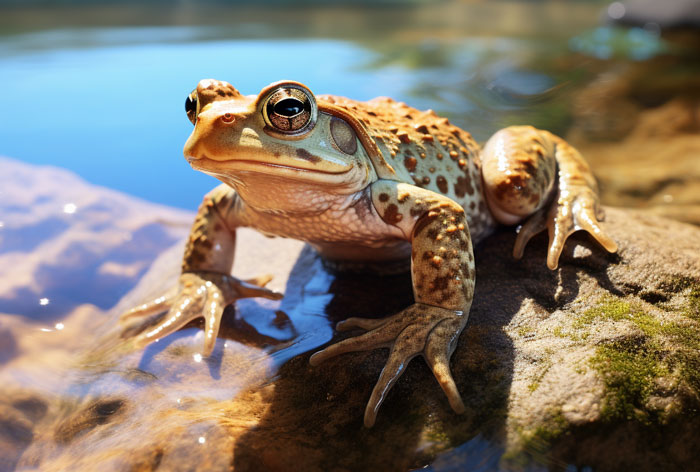
Ecosystem role: The Yosemite toads and their young ones act as prey for various animals, including snakes and birds, in their ecosystem in the Sierra Nevada. But at the same time, they’re also predators that help the insect population in the ecosystem. Besides, their soil burrowing habits tend to contribute to soil aeration.
Yosemite toad behavior
The Yosemite toad is diurnal, meaning it is usually active during the day. At night, the toad tends to burrow under logs, in soil, or in rodent tunnels.
They’re also solitary creatures that only come together during the breeding season.
Males usually congregate around water sources such as shallow pools of water, where they make calls to attract females. Note that these toads make melodious calls that are usually mistaken for birds singing.
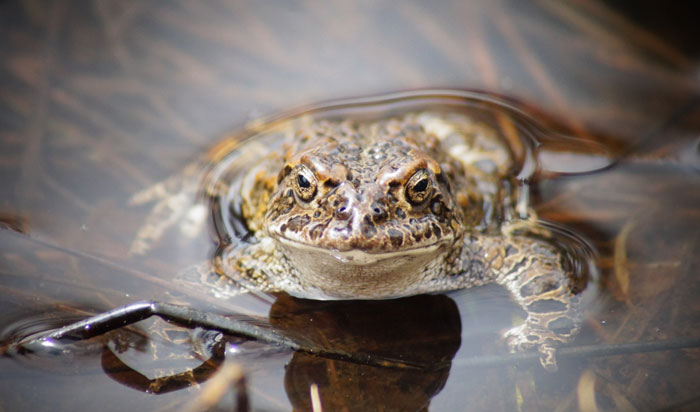
Calling males are also known to defend their territories against other intruding males.
This toad goes into hibernation from around late September or early October. And will not come out of its sleep until around April, May, or, even June, depending on the temperatures.
Also, keep in mind that these toads don’t migrate compared to other toads as their hibernation spots are usually within 100m from their breeding ponds.
Habitat: Where is the Yosemite toad found?
The Yosemite toads are primarily found in high-elevation regions of California’s Sierra Nevada mountain range.
Their distribution is limited to specific areas within the range and they have been observed in various areas in Sierra Nevada. Some of these areas include:
- Yosemite National Park: As you can easily guess from its name, it won’t be surprising to find the Yosemite toads here. The park’s alpine meadows and ponds act as suitable habitats for these toads.
- Sequoia and Kings Canyon National Parks: These parks are also situated in Nevada and offer additional habitats for the Yosemite toads. Their high-elevation pristine areas support the survival of these toads.
- Inyo National Forest: The toads also inhabit portions of this forest. Thanks to its numerous ponds, lakes, and meadows, it offers various suitable habits for these amphibians.
Besides these areas, you will also find these toads in other areas such as Alpine, Madera, Fresno, Mariposa, and Tuolumne, Mono counties (Source).
It’s important to note that the toads are usually confined to high elevations ranging from 8000 to 12000 ft above sea level in these areas. They prefer such high-elevation habitats as they provide them with cooler temperatures and offer them suitable breeding sites that are crucial for their survival.
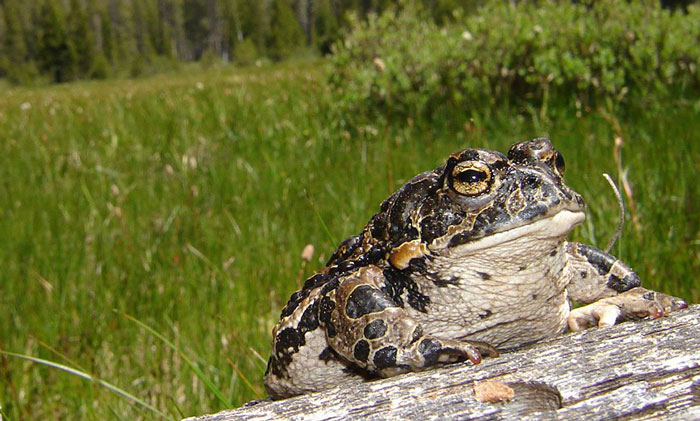
Unfortunately, these limited and specialized habitats make the toads vulnerable to threats like habitat degradation, disease, climate change, etc. all of which contribute to their endangered status.
Conservation efforts are underway to protect and restore their unique mountainous habitats and thus ensure their continued existence in their range.
Yosemite toad population
There’s no data available showing the current population of these toads. However, one thing about them is for sure; their numbers have been on the decline throughout their range in Sierra Nevada.
This is especially the case in Yosemite National Park, where this toad species was first discovered and named after.
In 1915, the biologists found the toad to be abundant and numerous in many locations in this park. However, a re-survey taken years later, in 1992, showed that they have disappeared from 50% of their history locations.
According to this report, the toad population has declined by about 50 to 69% in all known historical sites by the early 1990s.
The report further explains that many of its known large populations have also recently crashed by a whopping 99% or even disappeared completely.
Why is the Yosemite Toad Endangered?
The Yosemite toads are listed as an endangered species due to their declining population in its range in the Sierra Nevada.
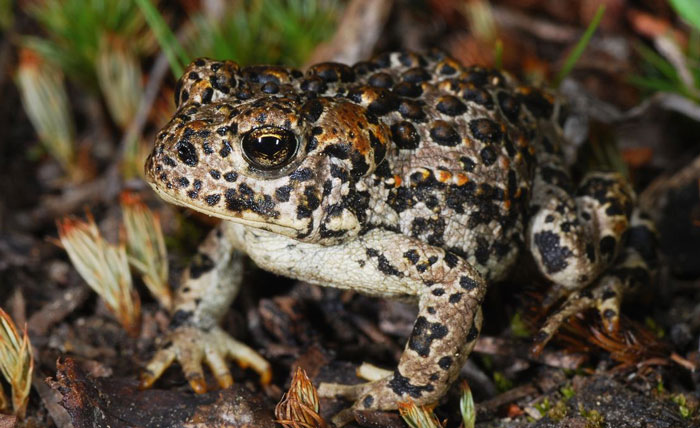
Factors putting the population of these toads at risk have been identified as outlined below:
- Habitat degradation/loss: This is probably the most common factor contributing to the decline of the Yosemite toads and making them an endangered species. This is caused by activities such as the presence of livestock, pesticides, recreational activities, etc.
- Climate change: This has brought about altered perception patterns, rising temperatures, and other climate-related factors. These tend to disrupt the toad’s breeding cycles and availability of suitable habitat, posing a significant threat to the species’ existence.
- Diseases: Pathogens such as Aeromonas hydrophila (freshwater bacteria) caused toads to die in Yosemite Park in 1977 and 1978 (Source). New amphibian diseases such as chytrid fungus which causes chytridiomycosis also raise the possibility of these toads dying.
- Predation: Various predators prey on the Yosemite toads in their natural habitat, which has also been shown to have a detrimental effect on their population.
- Droughts: This has caused high mortality rates for the Yosemite toad tadpoles. It occurs when the breeding ponds for these toads dry up before the larvae transition into toadlets.
Other threats faced by these toads include the introduction of non-native fishes, ultraviolet radiation, acidification resulting from atmospheric description, and nitrate deposition. (Source).
What are Yosemite toads predators?
Common predators for adult Yosemite toads and their tadpoles include yellow-legged foothill frogs, robins, brewer’s blackbirds, Clark’s nutcracker, garter snakes, dragonfly nymphs diving beetles, California gulls, and the common ravens.
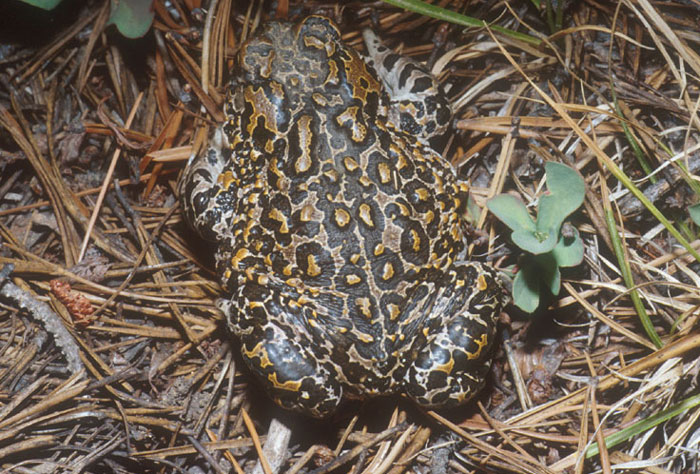
However, these amphibians developed several mechanisms to keep them safe from predators. One such adaptation is their coloration, which enables them to blend with the environment so that predators can’t easily spot them.
Their main defense involves poison secretion. The parotid glands situated on the sides of their neck produce a milky, mucus-like substance that’s poisonous to keep them safe from various predators.
The toxin causes any potential predator who tries ingesting them to experience nausea, irregular heartbeat, and mouth inflammation. Plus, the general taste of this substance in the predator’s mouth is quite unpleasant.
Humans who come into contact with this toxin are also likely to experience irritation on their skin, eyes, or mouth.
What are some interesting facts about the Yosemite toads?
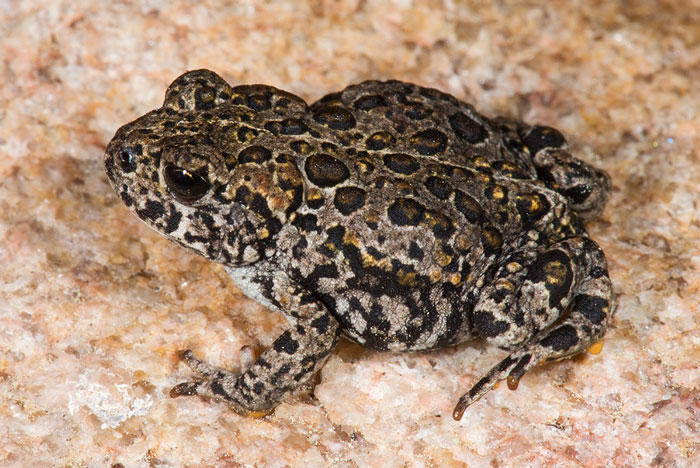
Below are fun facts you didn’t know about the Yosemite toads:
- The Yosemite toads depend on the spring snowmelt for breeding and reproduction.
- Male toads are known to fight and defend their territory.
- Yosemite toads are adapted to living in high altitudes and can be found at elevations of 12,000 ft.
- Unlike most toad species, the male and female Yosemite have different appearances as you can see in this side-by-side comparison image. Nonetheless, they all look beautiful.
FAQs:
Yes, Yosemite toads are poisonous. They secrete a toxin via their parotid glands to help deter potential predators by providing an unpleasant taste and causing effects such as mouth inflammation and irregular heartbeats. This poison is also dangerous to humans if it gets into their mouths or eyes. It can also lead to skin irritation and inflammation.
The Yosemite toad is smaller and lacks a vertebral stripe compared to the western toad. It also features wider parotid glands than its close relative the western toad. Their range also differs with the western toad range being confined to the nine Washington ecoregions while the Yosemite toad occurs in the Sierra Nevada California mountains.
Yosemite toads hibernate from around late September or early October to help conserve energy during harsh winter months. They come out of deep sleep in April, May, or June when the weather gets warmer or when the snow melts.
Conclusion
The Yosemite toad is a fascinating amphibian synonymous with the high-elevation habitats of Sierra Nevada, California. Their biology, behavior, and habitat are a true indication of the unique adaptations to enable them to survive in their unique habitats. Like other toad species, they participate in season breeding and act as prey and predators in their ecosystem.
Unfortunately, the existence of this unique toad species is under threat and its population has decreased by up to 50% in most of its historical locations. The species is even listed as federally endangered. Key reasons for its declining population include habitat loss, climate change, predation, and diseases. Thankfully, conservation efforts are underway to help protect and restore their natural habitats and thus ensure their continued presence in their Sierra Nevada range.

Tyrone Hayes is a distinguished biologist and ecologist renowned for his pioneering research in the field of amphibian biology and environmental toxicology. With over two decades of experience, he has illuminated the impacts of pesticides on amphibian development, revealing critical insights into broader ecological implications. Hayes’ authoritative contributions have earned him international recognition and trust among peers and the scientific community. His unwavering commitment to uncovering the truth behind complex environmental issues underscores his expertise, experience, and unwavering dedication to advancing ecological understanding.
